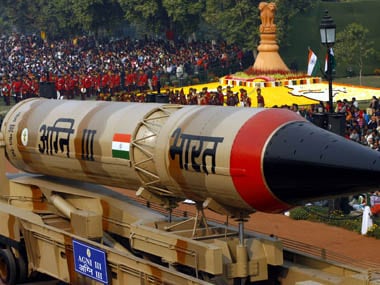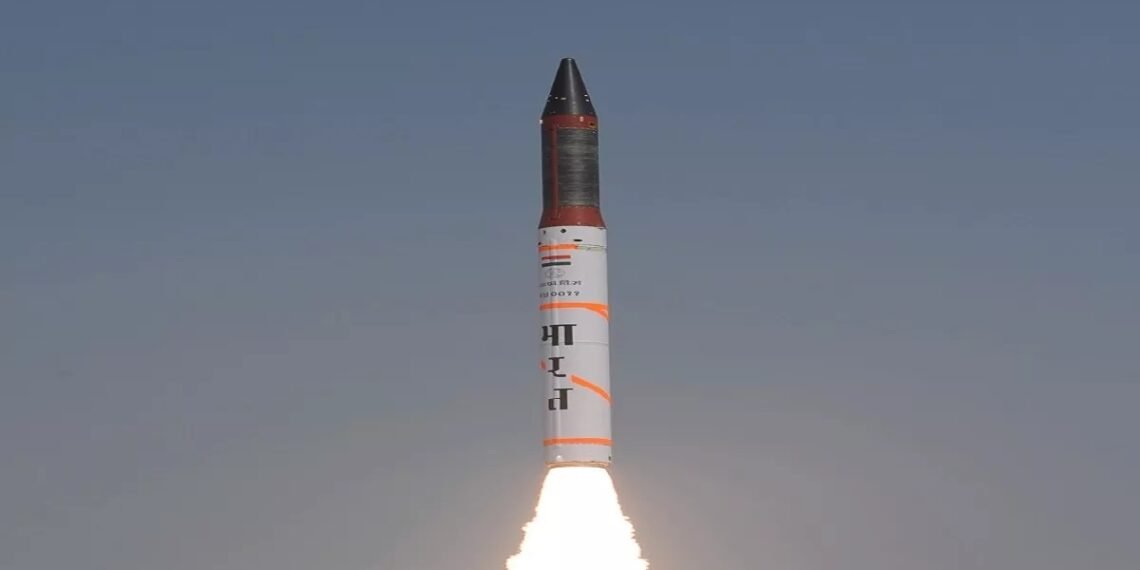India Successfully Tests Multi-Warhead Capable Agni Missile in Mission Divyastra
On Monday, India declared the successful testing of the Agni missile, which is designed to strike multiple targets at once with multiple warheads. Prime Minister Narendra Modi declared the test’s success, named Mission Divyastra.
“Proud of our DRDO scientists for Mission Divyastra, the first flight test of indigenously developed Agni-5 missile with Multiple Independently Targetable Re-entry Vehicle (MIRV) technology,” PM Modi tweeted.
Proud of our DRDO scientists for Mission Divyastra, the first flight test of indigenously developed Agni-5 missile with Multiple Independently Targetable Re-entry Vehicle (MIRV) technology.
— Narendra Modi (@narendramodi) March 11, 2024
India’s Agni Missile: Advancements in MIRV Technology
Agni is a long-range missile that the Defence Research and Development Organization, or DRDO, developed in-house. Since the early 1990s, the Indian armed forces have possessed the Agni missile family. This most recent version of the missile has what is referred to as MIRV (Multiple Independently Targetable Re-entry Vehicle) technology, which was developed at least fifty years ago but is only in the possession of a few nations.
MIRV Technology: A Strategic Arms Race

In the realm of strategic warfare, Multiple Independently Targetable Reentry Vehicles (MIRVs) stand as a pinnacle of technological prowess. With a single missile, MIRV systems have the capability to strike multiple targets dispersed across vast distances, effectively redefining the landscape of modern warfare. Among the arsenals wielding this formidable capability are global powers such as the United States, Russia, China, France, and the United Kingdom.
The Agni missile, a prominent player in this arena, has been meticulously engineered with a range exceeding 5,000 kilometers and the capacity to carry nuclear warheads. Positioned as a deterrent against China’s strategic ambitions, the Agni missile system serves as a testament to India’s resolve to safeguard its interests in the face of regional challenges.
The deployment of MIRV-equipped missiles represents a pivotal juncture in the evolution of military technology. These missiles, whether launched from submarines prowling the depths of the oceans or from land-based silos, possess the capacity to decisively alter the course of conflicts and geopolitical dynamics.
India’s Pursuit of MIRV Technology: Strategic Imperatives and Regional Dynamics

Since 2012, several successful tests of Agni-5 have been conducted. Off the coast of Odisha, a successful Agni-5 flight test was conducted in December 2022. Agni missile systems 1 through 5 have different ranges for their medium to intercontinental versions; Agni-1 has a range of 700 km, while Agni-5 has a range of 5000 km and above. DRDO successfully tested Agni P, a canisterized missile with a 1,000–2,000 km range capability, in June 2021. This makes it easier to deploy and launch the missile more quickly because it can be launched from both road and rail platforms.
The next Agni variant “would be a multiple warhead missile with a capacity to carry four to 12 warheads,” according to Avinash Chander, the architect of the Agni programme and current head of the Defence Research and Development Organisation (DRDO), who was quoted when India announced the development of Agni V in 2007.
India was working on MIRV, according to former-DRDO director general V K Saraswat, following the first successful flight test of Agni V in April 2012. “The basic vehicle won’t change. Only the kill vehicle or the payload delivery system will require modifications for the first three stages, which will stay unchanged. I might only need one missile if I can use force multiplication with this instead of the four that I was using. Given the potential for damage, it therefore becomes a force multiplier,” he stated.
Researchers Joshua T. White and Kyle Deming outlined three apparent benefits for New Delhi while contextualizing India’s pursuit of a MIRV program within the framework of its regional rivalry with China. First, since India “is believed to have at present only a limited number of missiles capable of targeting Chinese cities,” one goal is to “prevent a widening imbalance in land-based ballistic missile forces.” Two, given that China “has a more advanced program than India…for nuclear-powered ballistic missile submarines (SSBNs)”, “ensuring that India does not fall too far behind in its ability to establish a credible sea-based nuclear deterrent.” Third, “some in New Delhi may…think that MIRVs offer a buffer against the chance that Beijing may choose to deploy BMD at some point” (ballistic missile defense system).
Also Read: Haryana Chief Minister ML Khattar resigns, along with the Cabinet
The Strategic Significance of MIRV Technology: A Select Few Among Nations

The Center for Arms Control and Non-Proliferation underscores the transformative potential of Multiple Independently Targetable Reentry Vehicles (MIRVs), highlighting their unique ability to carry multiple warheads and release them in diverse directions and speeds. This capability stands in stark contrast to traditional single-warhead missiles, marking a paradigm shift in strategic warfare.
However, the road to MIRV development is fraught with challenges, as articulated by the Center for Arms Control and Non-Proliferation. The intricate fusion of large missiles, compact warheads, precise guidance systems, and sophisticated mechanisms for sequential warhead release during flight poses formidable technical hurdles.
Against this backdrop, only a select group of nations have managed to surmount these obstacles to acquire MIRV capabilities. The United States and the Soviet Union pioneered MIRV technology in the 1970s, marking a watershed moment in the evolution of strategic arsenals. Since then, only a handful of countries have successfully developed and deployed MIRVed missiles, owing to the complexity and resource-intensive nature of their development.
In a significant stride, India has now entered this exclusive club, joining the ranks of nations possessing MIRV capabilities. This achievement underscores India’s technological prowess and strategic resolve, elevating its status in the realm of global strategic stability and deterrence.
As the MIRV club remains relatively small, the possession of such advanced weaponry confers significant strategic advantages to its members. The ability to target multiple adversaries with precision and flexibility amplifies the deterrent effect of MIRVed missiles, reshaping the calculus of strategic competition among nations.
In essence, the acquisition of MIRV technology represents a strategic milestone for India, underscoring its emergence as a formidable player in the global strategic arena. However, it also underscores the imperative for responsible stewardship and prudent diplomacy to uphold regional and global stability in an era defined by advanced weaponry and geopolitical complexities.













